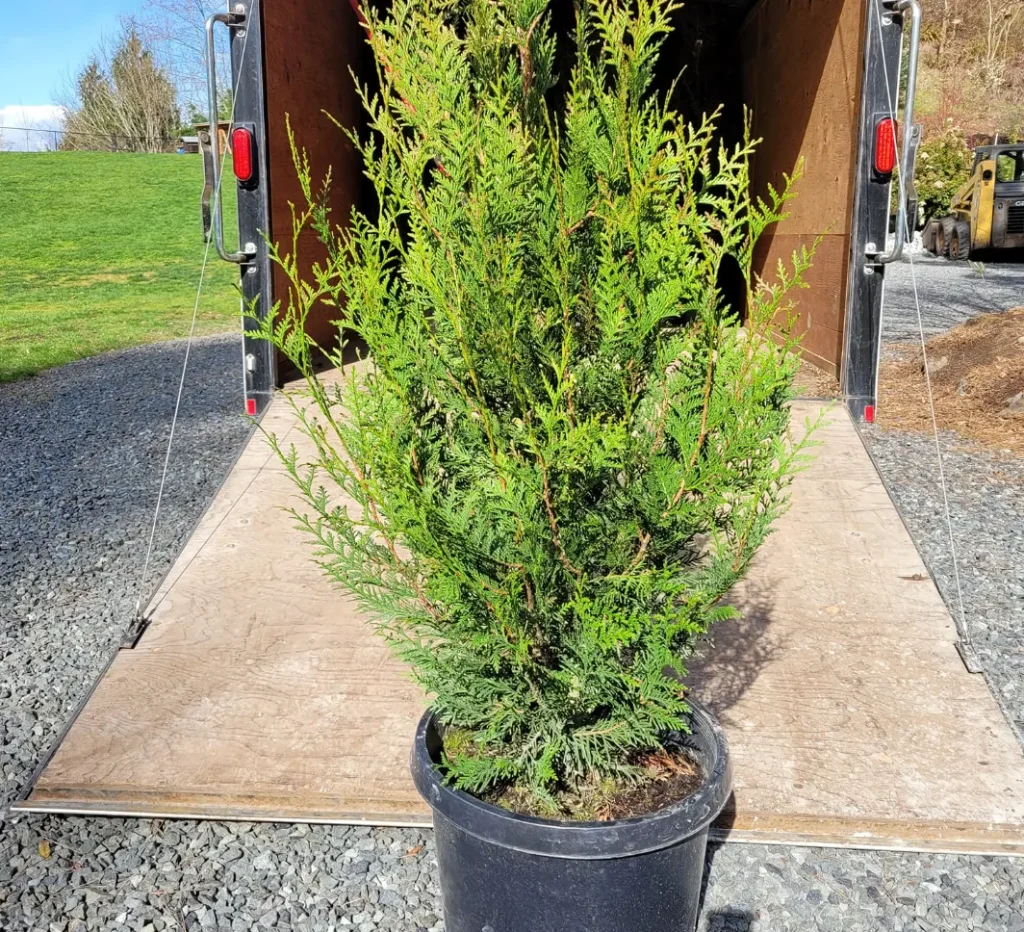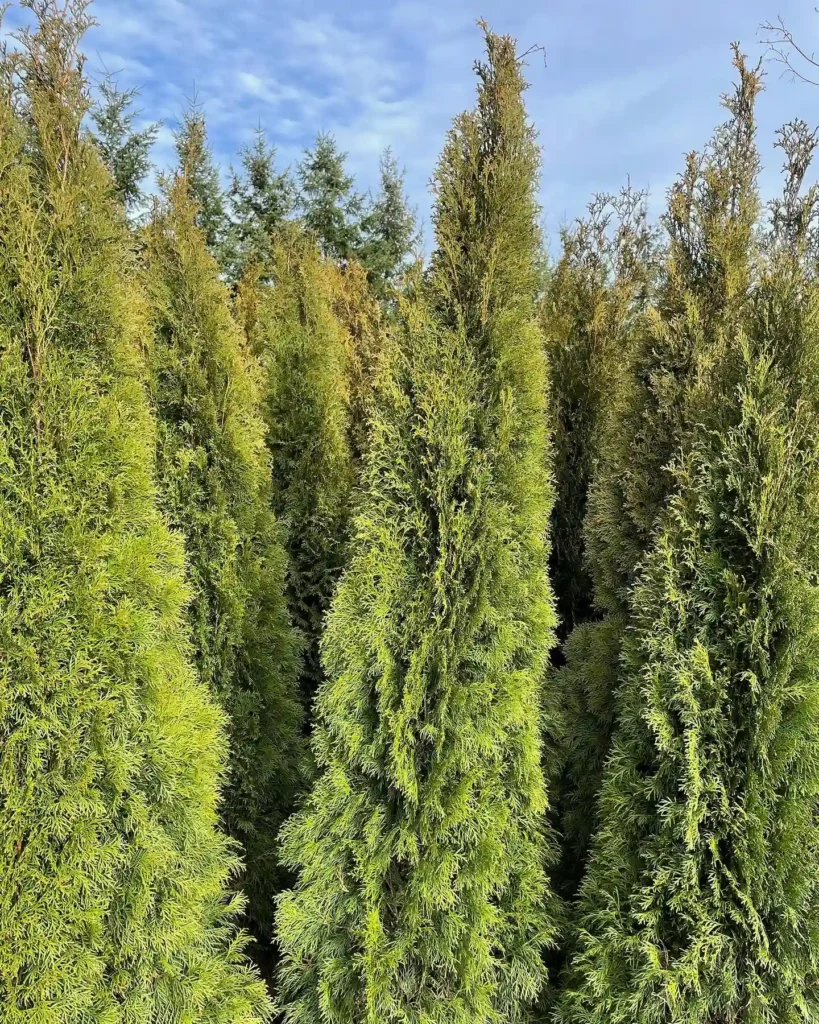
FAQs About Thuja Plicata Virescens
When I first encountered Thuja Plicata Virescens, also known as Western Red Cedar, I was drawn to its vibrant green foliage and strong presence in the landscape. As I’ve grown more familiar with this plant, I’ve come across several questions that people often ask about it. In this article, I’ll cover some of the most common FAQs about Thuja Plicata Virescens, touching on its characteristics, growth rate, care, and comparisons with similar species like Thuja Plicata Atrovirens and Green Giant.
5 Species in Genus Thuja
What Is Thuja Plicata Virescens?
Thuja Plicata Virescens is a cultivar of the Western Red Cedar, known for its narrow, upright form and bright green foliage that retains its color throughout the year. Unlike some other evergreens that can turn brown or dull during the winter, Virescens maintains its vivid hue, making it a popular choice for hedges, privacy screens, and windbreaks. It’s a robust tree that can reach up to 60 feet in height but remains relatively slender, usually not exceeding 12 to 15 feet in width.
Thuja Plicata Virescens Growth Rate
One of the aspects that make Thuja Plicata Virescens so appealing is its growth rate. In ideal conditions, this tree can grow 2 to 3 feet per year, making it an excellent choice for those who want a fast-growing privacy screen. However, the growth rate can vary depending on factors such as soil quality, watering, and sunlight exposure. In my experience, providing well-drained soil and consistent moisture will ensure that your Virescens reaches its full growth potential.
Is Thuja Plicata Virescens Deer Resistant?
A common concern for many gardeners, including myself, is whether their plants are deer-resistant. Thuja Plicata Virescens is generally considered deer-resistant, which is a significant advantage if you live in an area with a high deer population. While no plant is entirely deer-proof, the Virescens seems to be less palatable to deer compared to other species. I’ve found that planting it alongside other deer-resistant plants can create a more effective barrier.
Thuja Plicata Virescens vs Atrovirens
When comparing Thuja Plicata Virescens to Atrovirens, another popular cultivar of Western Red Cedar, there are a few key differences. Virescens is known for its brighter, more vibrant green foliage, while Atrovirens tends to have a deeper, darker green color. Additionally, Virescens has a more upright and narrow growth habit, making it ideal for tight spaces. In contrast, Atrovirens can spread out a bit more, making it suitable for larger areas. Both are excellent choices, but your decision should be based on the specific needs of your landscape.
Thuja Plicata Virescens vs Green Giant
Another frequent comparison is between Thuja Plicata Virescens and Thuja Green Giant. Green Giant is another fast-growing evergreen known for its impressive size and durability. While both are excellent for privacy screens, Green Giant tends to grow even faster and can reach heights of 60 to 80 feet, with a spread of 20 feet or more. Virescens, on the other hand, is slightly smaller and narrower, which might be better suited for more confined spaces. Personally, I prefer Virescens for areas where I need height without taking up too much horizontal space.
How to Care for Thuja Plicata Virescens?
Caring for Thuja Plicata Virescens is relatively straightforward. It thrives in full sun to partial shade and prefers well-drained soil. Regular watering is crucial, especially during the first few years as the tree establishes its root system. Mulching around the base can help retain moisture and keep the roots cool. Pruning is generally not necessary, but if you need to shape the tree or control its height, late winter to early spring is the best time to do so.
How to Propagate Thuja Plicata Virescens?
Propagating Thuja Plicata Virescens can be done through cuttings, though it requires patience. Take a cutting from a healthy, mature tree in late summer. Strip the leaves from the lower part of the cutting and dip it in rooting hormone. Plant it in a pot filled with a mixture of sand and peat moss, and keep it in a warm, humid environment. It can take several months for roots to develop, but with proper care, you’ll have a new plant ready to be transplanted into your garden.
What to Plant with Thuja Plicata Virescens?
Choosing companion plants for Thuja Plicata Virescens can enhance the overall look of your landscape. I recommend planting it alongside other evergreens like boxwoods or holly for a uniform, year-round green backdrop. Ornamental grasses or perennials like hostas and ferns can add texture and contrast at the base of the tree. For a pop of color, consider underplanting with shade-tolerant flowering plants like azaleas or rhododendrons.
Conclusion
Thuja Plicata Virescens is a versatile and resilient evergreen that offers both beauty and functionality to any garden. Whether you’re looking for a fast-growing privacy screen, a deer-resistant option, or a tree that stays green year-round, Virescens is an excellent choice. I’ve found that with proper care, this tree can thrive in a variety of settings, providing structure and greenery for years to come. Whether you’re comparing it to Atrovirens or Green Giant, Thuja Plicata Virescens stands out as a reliable and attractive addition to any landscape.
If i die, water my plants!



